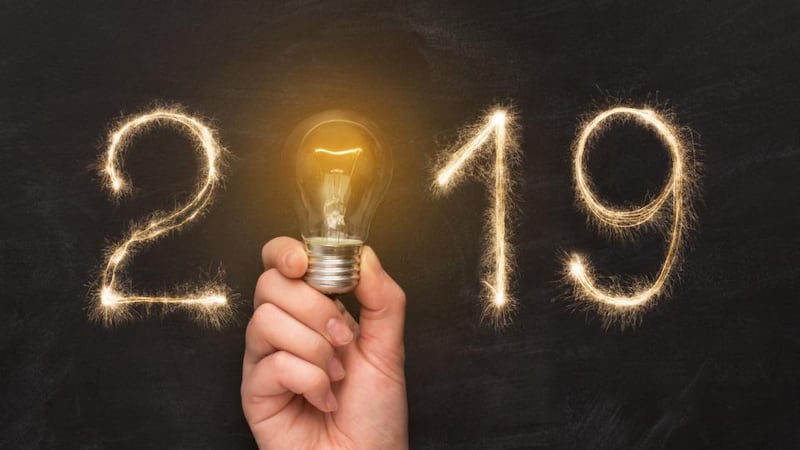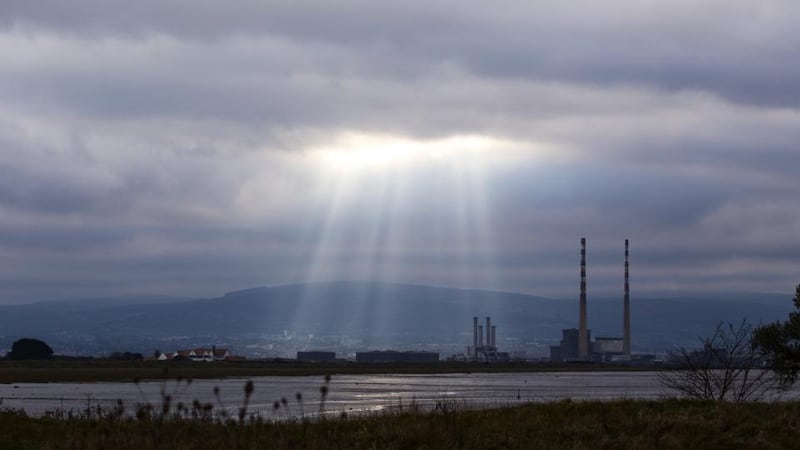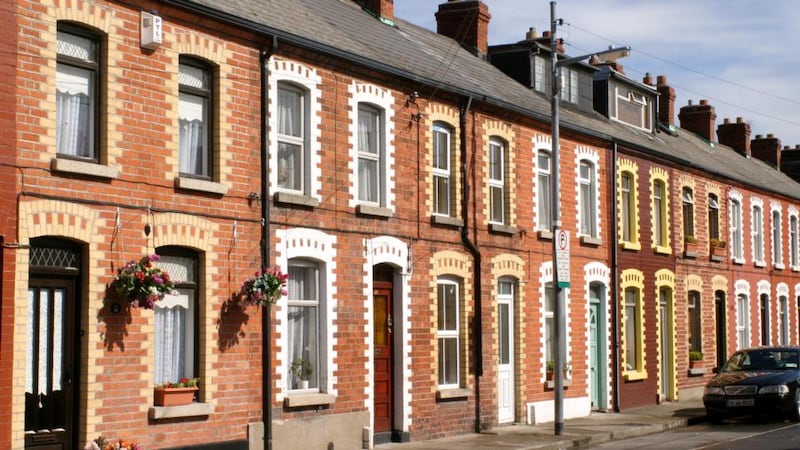Rapid change is making energy a hot topic right now. For a utility, that’s unusual. “The whole clean energy transition from carbon based to renewable solutions is the big trend in energy right now and what is particularly interesting is that we have a very unusual confluence of societal, environmental and economic drivers all converging at the same time,” says William Carmody, an expert in renewable energy investment at law firm Mason Hayes Curran.
“It’s being driven by changes both on the consumer side and on the business side. Businesses are hearing a societal request for clean energy. But they also see the economic benefits of responding to that call for change.”
The physical infrastructure – be it wind or solar farms – is costly. But once it is in place, renewable energy offers a cheaper fuel source. “Ultimately over the long term that will lend itself to a stabilisation of energy prices. Not so much a reduction but a moderation of increases that will benefit businesses.”
Ireland’s energy supply
It also ensures greater security of supply. Most of Ireland’s electricity comes from a gas pipeline that originates in Russia. “That could get turned off at any time, so renewable energy for Ireland is a way to increase energy independence.”
Ireland’s wind is its greatest natural resource in this respect. Yet while we were to the fore of European off shore wind energy in 2004 with the launch of the 25 mw plant off Arklow, since then no more off shore wind plants have been built here, despite the fact that in other European countries plants of over 600mw are now in place.
With both investors and utilities companies willing to build them, the space is gathering momentum. It only requires a policy push to get it going. Part of this momentum is growing demand.
Our Business Energy Solutions team has a wide range of expertise to deliver bespoke energy solutions for different needs
"At SSE Airtricity we're seeing more and more interest from businesses in the benefits of 'going green' as a great way to make savings on their energy bills, while reducing their carbon footprint at the same time," says Stephen Gallagher, head of business energy at SSE Airtricity.
“As well as supplying all of our customers with 100 per cent green electricity, SSE Airtricity is working with companies of all shapes and sizes across Ireland to improve their energy-efficiency and sustainability measures. I think businesses are recognising it as a win-win. Customers, who are more environmentally aware than ever, will see that the company is taking issues they care about seriously, and at the same time, the business can make major savings.”
One size won’t fit all businesses however. “Our Business Energy Solutions team has a wide range of expertise to deliver bespoke energy solutions for different needs. For instance, through our investment in Activ8 Solar Energies, we’re helping businesses realise the benefits of solar power, while through our partnership with Verde LED, we’re offering the installation of industry-leading, energy-efficient lighting,” says Gallagher.
For example, as well as supplying Dawn Meats with 100 per cent green electricity, SSE Airtricity has worked as a strategic partner to support its "Fossil Fuel Free" project to cut emissions by 50 per cent by 2025. "Through a variety of energy-efficiency measures, including lighting upgrades and heat recovery, we've helped Dawn Meats reduce primary energy usage at all of its sites by 14 billion kilowatt hours (kWh). These initiatives have delivered more than €500k in energy savings for the company," he says.
Localised energy sources
Small businesses are benefiting too. SSE Airtricity’s Business Energy Solutions team worked with Aillwee Cave and Birds of Prey Centre, in Co. Clare to undertake a series of lighting upgrades which resulted in energy costs savings of approximately €6,400 per year.
The energy sector is also seeing a marked trend away from large power generation model, into something much more localised. "One of the key changes we will see increasingly over the next few years is that rather than traditional power stations generating energy we will see more self-generation. Already we are seeing businesses in sectors such as agriculture installing wind turbines, or businesses with large roof spaces opting for solar, which is helping the become energy independent," says Cormac Mannion, energy services manager at Energia.

“By generating their own electricity they know they have security of supply as well as taking a lot of uncertainty out of fluctuating prices. And because the wind doesn’t blow all the time and the sun isn’t there at night, companies are also investing in large scale batteries.”
Consumers are likely to follow the same trends. “We’ll most likely see lots of mini generators rather than one big one serving the community. You’ll be trading with your neighbour. We’re already seeing energy communities in countries such as Holland. You know who you are buying from, it’s a more personalised way of doing things than the old fashioned one based on economies of scale.”
Distributed ledger type technologies will facilitate such trading. “It’s an exciting time as well as an uncertain one for power generation. It’s the rise of energy as a service rather than as a commodity and blockchain is allowing this to happen in terms of trading and encryption, but infrastructure will still be needed. Energy generation used to be a very stable industry where not much happens. It would bore people to tears at dinner parties.”
Not any more. “Now such much change is happening and what’s really interesting about it is that these changes are not regulatory driven. It’s being driven by technology and it’s happening so fast that the policy is having to catch up.”
New sources for Renewable Energy
Sandra O’Connell and Barry McCall
Renewable energy is coming from new sources too, such as waste. Covanta’s waste-to-energy facility in Poolbeg , Co Dublin began operating in 2017. It processes approximately 600,000 metric tonnes of waste a year that would otherwise go to landfill. Burning it enables it to supply enough energy in to the national grid for up to 80,000 homes a year.
In addition to generating renewable electricity continuously, the plant also helps reduce Ireland’s dependence on imported fossil fuels. It helps reduce the amount of waste going to export and landfill too. With China having recently restricted its intake of soft mixed plastics – not the kind that go in green bins but items such as cling film and crisp bags – very many countries must now look for alternatives to simply exporting their waste.

This ties in with the trends towards the circular economy, whereby value is extracted from goods at every stage of their life cycle, with a view to reducing or even eliminating waste.
Covanta’s waste ash is shipped to the Netherlands where metals recovery takes place. To date some 20,000 tonnes of valuable metals have been recovered in this way. The 100k tonnes of residual ash is then used for road construction products in the Netherlands, where it has a particular value.
“Don’t forget, when they dig down in the Netherlands, they find water,” says Kieran Mullins. In time the company hopes to conduct that recovery activity in Ireland too.
At the end of March, the facility announced that it had reached the significant milestone of one million tonnes of residual waste processed since opening in June 2017. Since commencing operations, the plant has produced more than 700,000 megawatt hours of electricity, enough to power 100,000 homes. The facility currently accepts 600,000 tonnes of waste per annum.
The next stage in its operation will see the plant supply heat to 50,000 homes in Dublin under a planned district heating initiative.
Dublin Waste-to-Energy
The Dublin Waste-to-Energy project is a public private partnership (PPP) between Dublin City Council, acting on behalf of the four Dublin Local Authorities, and energy from waste specialist Covanta.
Despite these impressive statistics the development of the facility has not been without controversy with opponents labelling it an incinerator rather than a waste-to-energy facility.
“It took 20 years from original conception to taking in the first tonne of waste”, says Kieran Mullins. “There are more than 460 waste-to-energy plants around Europe and they are seen to be a part of the circular economy and Energy Union. At present they provide about 1.5 per cent of Europe’s energy needs.”

The circular economy he refers to is an economic system aimed at minimising waste and making the most of resources. This approach contrasts with the traditional linear economy, which operates on a “take, make, dispose” model.
The European Commission Energy Union is aimed at making energy more secure, affordable and sustainable. It will facilitate the free flow of energy across borders and a secure supply for every European citizen.
“We take in residual municipal solid waste and turn it into energy,”Mullins explains. “We take in black bag waste, not the green or brown bin. We are at the back end of the system, post-recycling. Every tonne of waste we take in generates the same amount of energy as a quarter tonne of oil or 400kg of coal. We are reducing the amount of fossil fuels imported and used in Ireland. When the Dublin District Heating System gets up and running, we will supply 50,000 homes with heat.”
We will provide the base load for the system but other sources of waste energy such as from the Synergy electricity generating plant next door to us here can be used
The first homes to be supplied will be those built on the former Dublin Glass Bottle Company site in Ringsend while others throughout the city will be added after that. The system will work by water at 90 degrees being pumped out to homes from the Poolbeg facility and then returning to it at 50 degrees when it is reheated and sent out again.
“We hope to see the first homes connected by the end of 2020 or early 2021,” says Mullins. “But that’s a matter for Dublin City Council. That will bring us from 30 per cent to 88 per cent energy efficiency. We will provide the base load for the system but other sources of waste energy such as from the Synergy electricity generating plant next door to us here can be used. That’s what happens with these systems in other cities around Europe.”
The company will shortly apply for an increase in the amount of waste processed each year from 600,000 tonnes to approximately 690,000 tonnes. “This will bring us up to capacity. There are no changes planned for the plant itself.”













